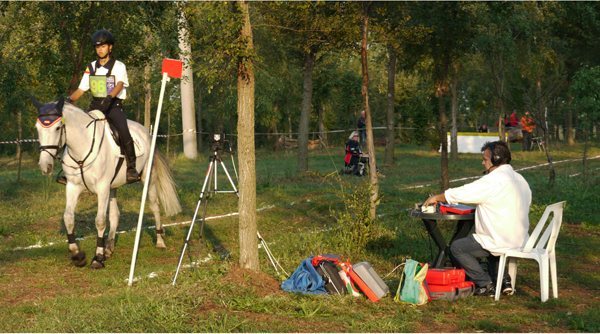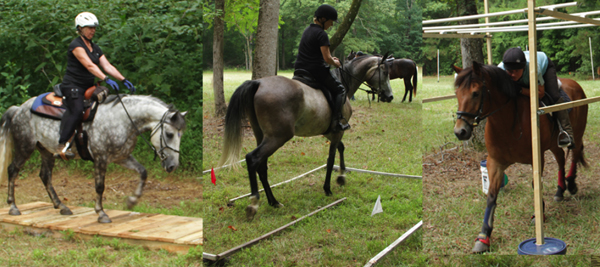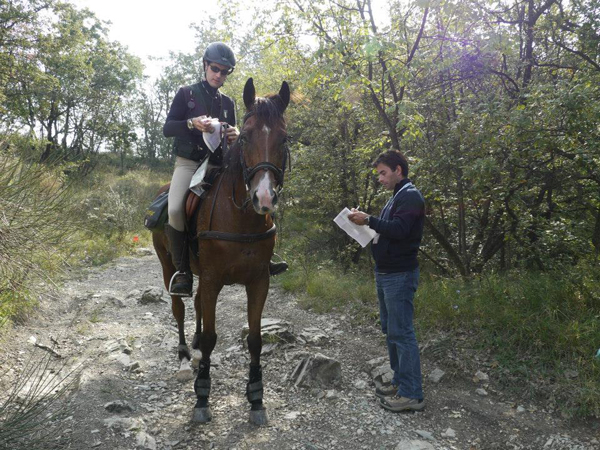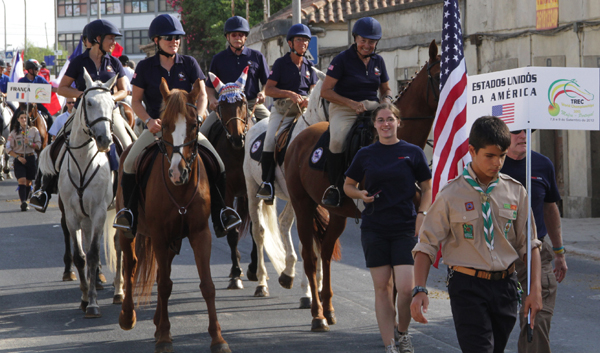TREC: “The Adventure Sport for Trail Riding Enthusiasts”
Originating from the equestrian tourism industry, TREC is an international sport that tests horses and riders over three phases.
by Jocelyn Pierce
with photos by TREC-USA
TREC, or Techniques de Rondonee Equestre de Competition, began in France as a way to test trekking guides working in the equestrian tourism industry. This multi-discipline sport is comprised of three phases—Orienteering, Control of Paces, and a Cross-Country Obstacle Course—with each phase offering a unique challenge to horse and rider teams. TREC can either be ridden or driven, with courses designed to accommodate each discipline.
“TREC is a true test of the abilities and skills of horse and rider,” said Kim Stoddard, President of the United States National Equestrian Tourism Organization (USNETO). “You’re out there facing challenges on the trail. It takes a lot of independence and a lot of trust and communication between horse and rider.”
.jpg)
Stoddard competed for Team TREC-USA at the 2012 World Championships in Portugal and has a well-rounded equestrian resume. She has competed in hunters, equitation, and eventing and grew up fox hunting, but when she adopted a mustang as a project horse, she sought new activities appropriate for her mount. Through this exploration, she began trail riding and soon discovered the sport of TREC.
“TREC is great because it really helps people to become safer, more competent trail riders, and would benefit anyone wishing to take part in equestrian trekking tours,” said Stoddard.
In addition to being a great skills building sport, TREC is an avenue in which all riding disciplines, types of horses, and varying levels of riders are welcome and can be competitive.
Phase One: Trail Orienteering on Horseback (240 Points, 10 points for Equipment Pack)
The first phase of TREC, Orienteering, requires sound navigational skills and the ability to cover varied terrain. Successful teams will correctly and safely traverse the route while staying within the optimum time.
.jpg)
First, riders are given an allotted amount of time to copy down the route they must follow onto their blank topographical map. Teams must then follow the route using their map and compass (GPS devices are not allowed) and must be prepared to deal with potential hazards and emergency situations one might encounter while on the trail.
There are unknown checkpoints along the route that riders must pass through in the correct sequence and direction. Riders must also maintain the posted pace, which varies throughout the course. Points are deducted for riders traveling either too quickly or too slowly and for riders passing through the checkpoints from the wrong direction or missing them altogether.
Riders must also carry an equipment pack with them in this phase that includes items like a first aid kit and reflective gear. Points are deducted for riders that are missing the specified items from their pack.
Phase Two: Control of Paces (60 Points)
In the second phase, riders must show they can clearly control the horse and demonstrate the obedience of their mount. “This is TREC’s nod to Dressage,” said Stoddard.

Riders must first canter out, and then walk back on a 150 meters long and 2-4 meters wide passage without breaking gait. Higher marks are given to the rider that can canter the horse slowly and walk quickly while staying within the narrow track. Control of the Paces can be on different terrain or in an area with distractions to increase the level of difficulty.
Phase Three: Cross-Country Obstacle Course (160 Points)
Presumably the most exciting phase of TREC, the Cross Country Obstacle course is 1-5km long and includes a variety of obstacles riders and horses might come across while riding in the countryside and certainly what trekking guides experience on a daily basis.

A course will have 16 obstacles that are worth 10 points apiece and can be designated to be performed in-hand or mounted. Examples of obstacles include jumps, low branches, and banks, among others. Each obstacle is optional; riders are not eliminated for skipping obstacles.
Levels and Scoring
TREC is a very accessible sport. There are four levels of competition, which accommodate riders and horses of varying skill. Level I is the beginner level while Level IV is the most challenging.
In levels I and II, riders can ride individually or in groups of up to four. The course for Orienteering will be shorter, the Control of Paces straightforward, and obstacles in the Cross Country phase will be simpler with jumps not to exceed 18 and 24 inches respectively.

In Levels III and IV, riders will ride individually. Routes in the Orienteering phase will be longer, more difficult, and will require advanced map-reading skills. The Control of the Paces may be curved or varied terrain. In the Cross Country Obstacle phase, challenges may involve an unusual approach or exit, uneven terrain, faster time requirements, and obstacle heights up to 3’ and 3’6” respectively.
The horse and rider team with the most points at the end of the three phases wins. One of the bonuses of TREC is that teams aren’t eliminated for being unable to perform parts of the competition; they are just given a lesser score.
How to Get Involved
TREC has a huge following in Europe, and the TREC movement in the United States is gaining momentum.
The International Equestrian Tourism Federation (FITE) is the official governing body of TREC and hosts a TREC World Championship every four years. Riders from all over the globe, including the United States, travel to compete. In 2012, the World Championships were held in Mafra, Portugal.

USNETO is recognized by FITE as the official governing body of TREC in the United States. USNETO aims to promote safe trail riding, improve horsemanship and navigational skills all while encouraging enjoyment of the countryside in an eco-friendly manner.
Recognized instructors, some of whom are able to travel, are willing to teach clinics and help newcomers learn about TREC. Contact Kim Stoddard for more information.
Learn more about TREC.
About the Author: Jocelyn Pierce is an avid equestrian and lover of travel and photography. Her passion for adventure has led her on numerous excursions throughout North America and Europe. When she’s not riding and competing her homebred mare, she enjoys hiking, camping, and snapping photographs.




